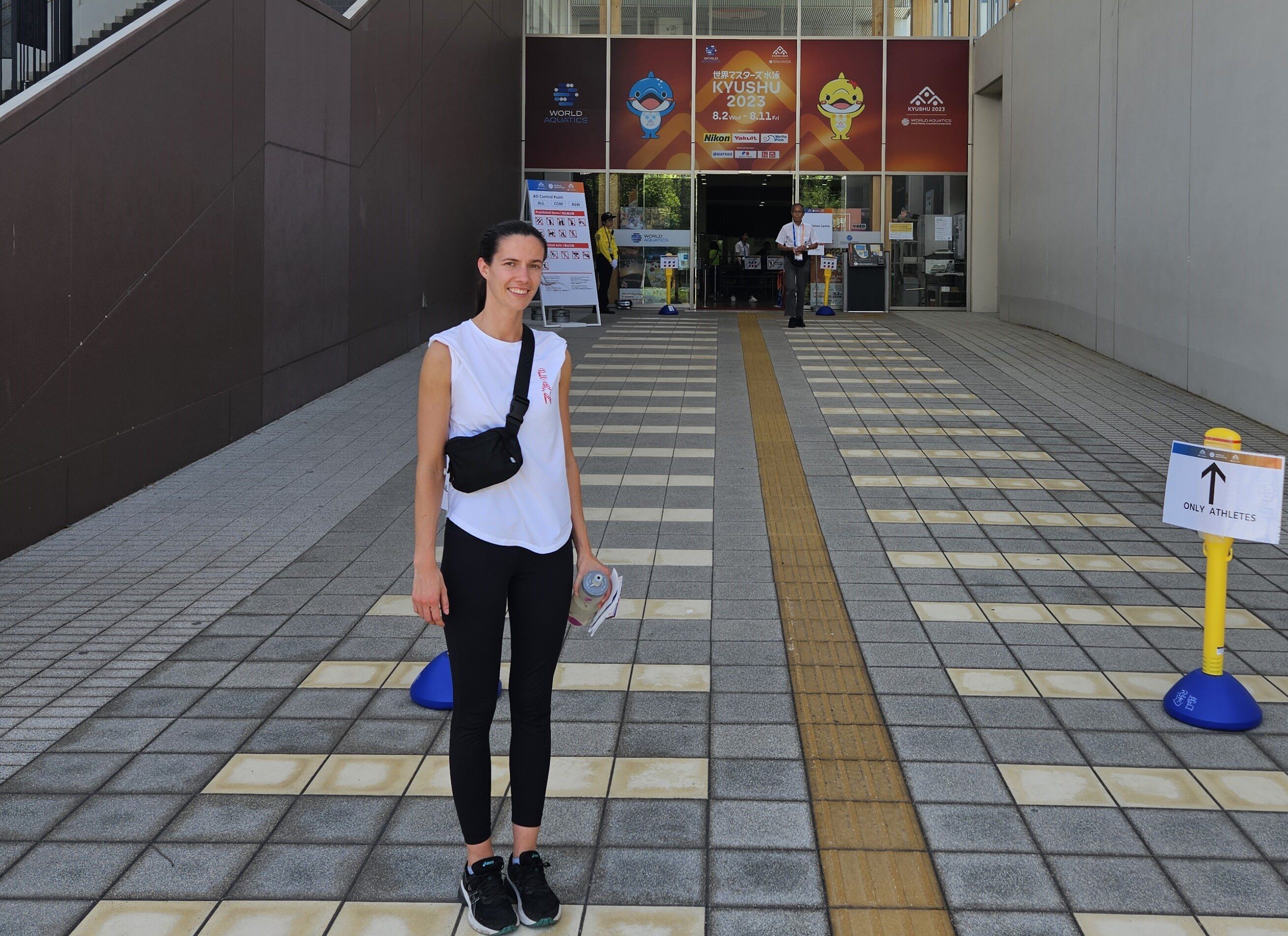
For Masters athletes, the finish line isn’t a signal to stop, it’s an invitation to continue, proving that age isn’t the end of the race but just another part in the journey of sport. Staying active throughout life is essential for maintaining both physical and mental well-being. In fact, regular physical activity not only improves cardiovascular health (Huang et al., 2022) and preserves muscle strength (Ramsey et al., 2021), but it also enhances cognitive function (Haverkamp et al., 2020) and overall quality of life (Marquez et al., 2020), especially as we age. One group that exemplifies the benefits of lifelong physical activity is Masters athletes.
Masters athletes are individuals who engage in organized sports beyond the typical peak competitive years, often starting at age 35, although this number is subject to change depending on the sport (Callary et al., 2021; Churchill & Baggish, 2020). For instance, in artistic swimming (formerly known as synchronized swimming), masters-level competition begins as early as age 25 at the international level. Masters athletes participate in structured, rule-governed activities with a competitive element, distinguishing them from those who engage solely in exercise for fitness (Callary et al., 2021). Most Masters sports divide their competitions into age categories, typically in 5-year intervals (for example, 40–44, 45–49, 50–54, etc.). However, the specific groupings can vary depending on the sport and these categories aim to promote fair competition by accounting for age-related declines in performance (Callary et al., 2021).
In this SIRCuit article, I’ll share my journey through the levels of artistic swimming up to the Masters level, including my experience competing at one of the Masters “big three events,” the World Aquatics Masters Championships that occurred in Japan in August 2023. I’ll also share my perspective on key considerations for Masters athletes and offer ideas to help achieve success at this level of sport.
My journey through the levels of artistic swimming
I started artistic swimming at age eight, competing initially at the provincial level. I was nervous at my first practice but quickly fell in love with the sport. Over time, this passion grew into a full-fledged commitment, propelling me to the elite level. My daily schedule was intense: morning classes followed by practice from 12:30 p.m. to 7:30 p.m., training for solo, duet, and combo (team of 10 athletes) events.
These long hours of training reflect the exceptional demands of artistic swimming, a sport that blends endurance, flexibility, strength, power, acrobatics, and acrobatics (Mountjoy, 1999, 2009). Athletes also have to master prolonged breath-holding during routines, showcasing the sport’s unique challenges (Viana et al., 2019). My training included professionally guided strength sessions 3 times a week and flexibility sessions twice weekly. While grueling, this regimen led to unforgettable experiences: winning silver in the solo event at my second Canadian Championships Qualifiers as well as competing at the 2014 USA Open Championships in Las Vegas.
After 3 years at the national level, I transitioned to university artistic swimming at McGill where I immediately noticed a shift in atmosphere: the competitive drive remained, but the pressures and intensity of elite training softened. As student-athletes, we balanced academics with practices, which were often late at night due to limited pool access. Despite the challenges, my time at McGill was marked by camaraderie and highlights like performing a team routine to Whitney Houston hits during the 2018–2019 season.
Graduate studies brought me to the University of Montreal, where I transitioned to Masters-level artistic swimming. COVID-19 disrupted my early involvement, but by 2022, I reconnected with a former elite teammate, Mélody Roy. Mélody, who holds a degree in software engineering, swam at the elite level for 8 years and represented Canada on 2 national junior teams. Together, we reignited our passion for the sport, training seriously while prioritizing enjoyment. Considering our engagements in school and work, we mutually agreed upon training together once or twice a week and I complemented our training with one or two strength sessions on my own as well as running.
Our extensive experience in the sport—and the valuable network of contacts it brought—combined with a clear understanding of what we sought in a coach, played a key role in selecting the perfect fit. Our coach struck the ideal balance between challenging us and listening to our needs. Given that we had more experience in artistic swimming than she did, we worked together to design training plans, which fostered a collaborative relationship between the three of us. This is where our experience came in handy, as it provided me with a deep understanding of the essential elements for success, ranging from efficient training and injury prevention to reaching peak performance.
That season, we competed in several Quebec competitions, winning gold medals each time. It was gratifying to achieve success, even though our performance level did not match the heights we had reached during our elite years.
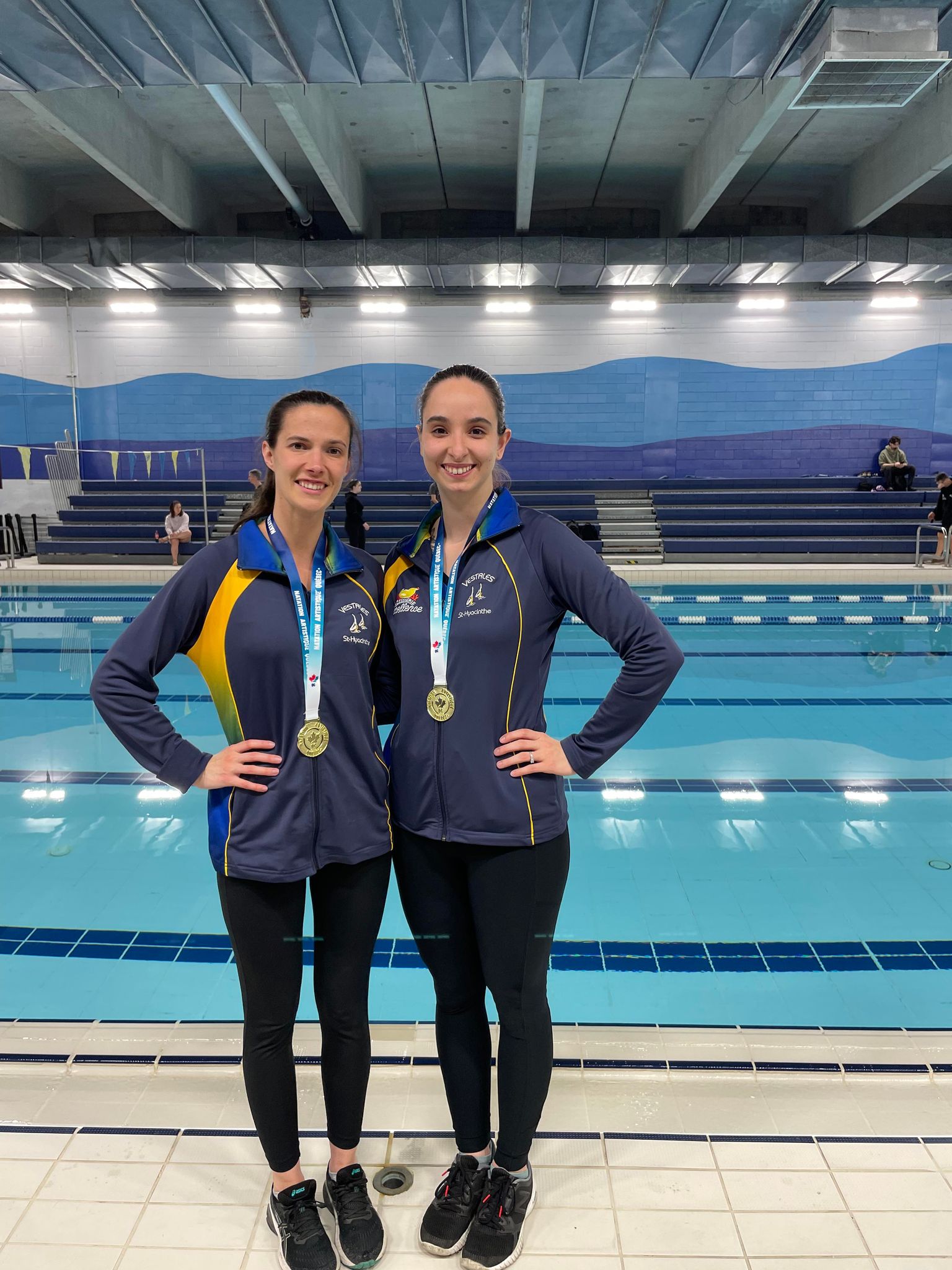
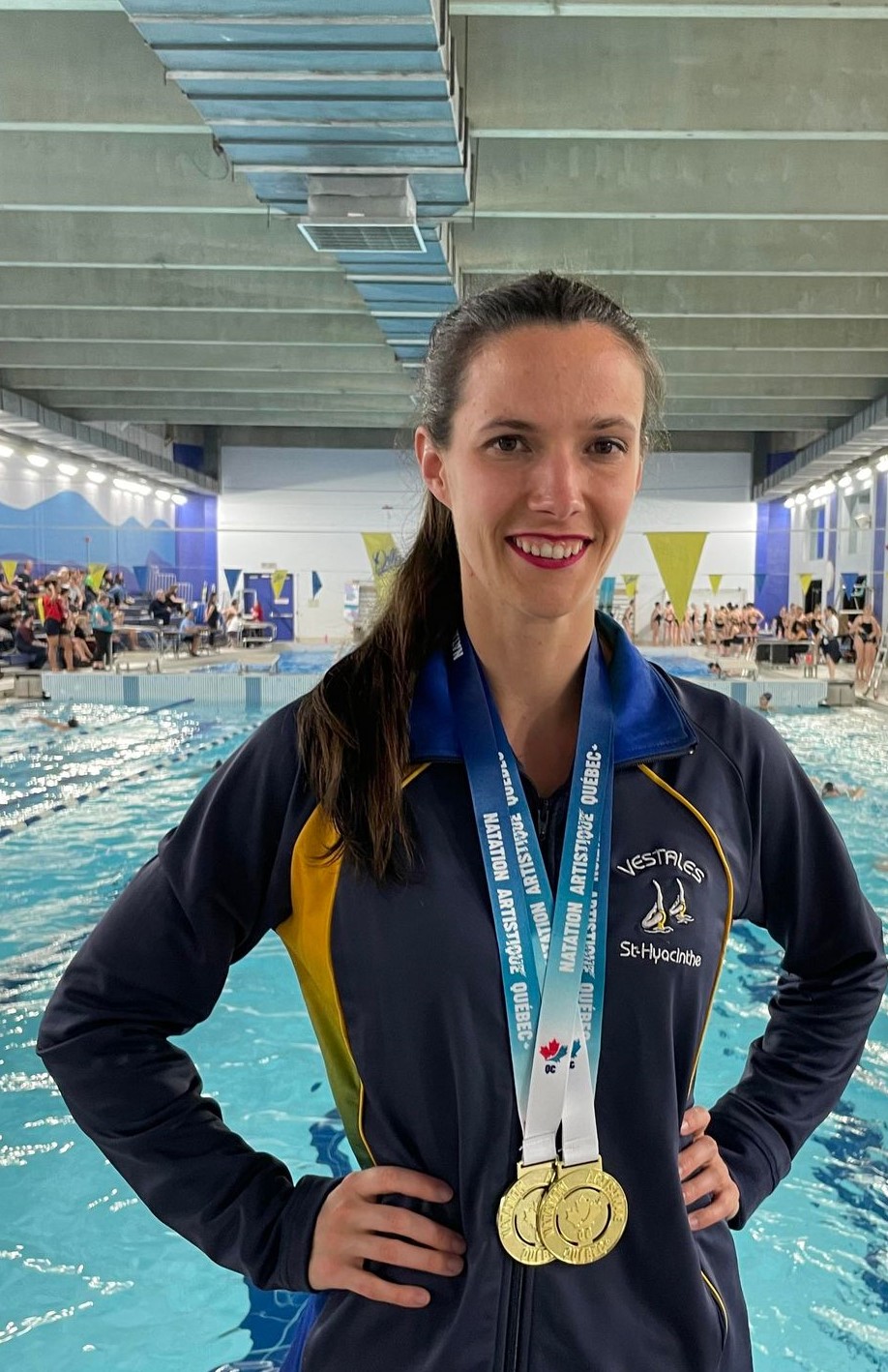
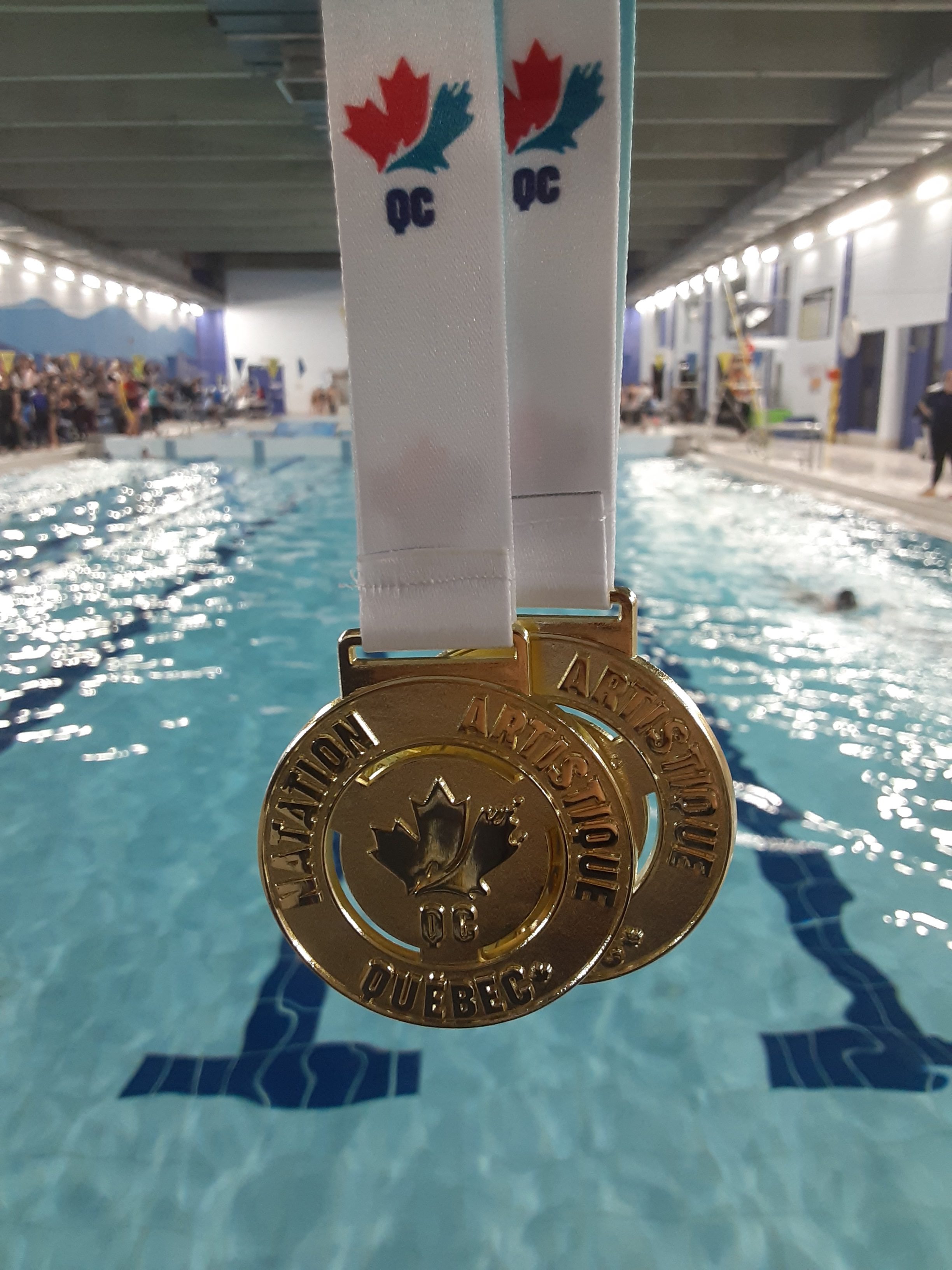
My experience at the World Aquatics Masters Championships in Japan
Competing at the World Aquatics Masters Championships in Japan in 2023 was a dream come true. Representing Canada on the world stage was exhilarating, but it required meticulous preparation from maintaining peak fitness, to prioritizing sleep and minimizing the impacts of jetlag. With Mélody and I on different schedules leading up to the event, I trained individually, focusing on strength, running, and routine rehearsals. Because I was arriving in Japan just two days before the competition, I had to adjust to the 13-hour difference beforehand. Over 13 days, I shifted my sleep schedule, working on my PhD at night and sleeping during the day, which was a demanding.
In Japan, the competition venue was stunning, and the atmosphere electric. Before the official start of the competition, we had what we call “music training”. This is a crucial part of preparation where we get to play our music on the competition sound system and practice segments or our full routines in the pool, mimicking competition conditions, but without judges. Each duet is allotted a limited time slot, making every second count. It was a fantastic opportunity to watch other duets, connect with athletes from around the world, and share experiences.
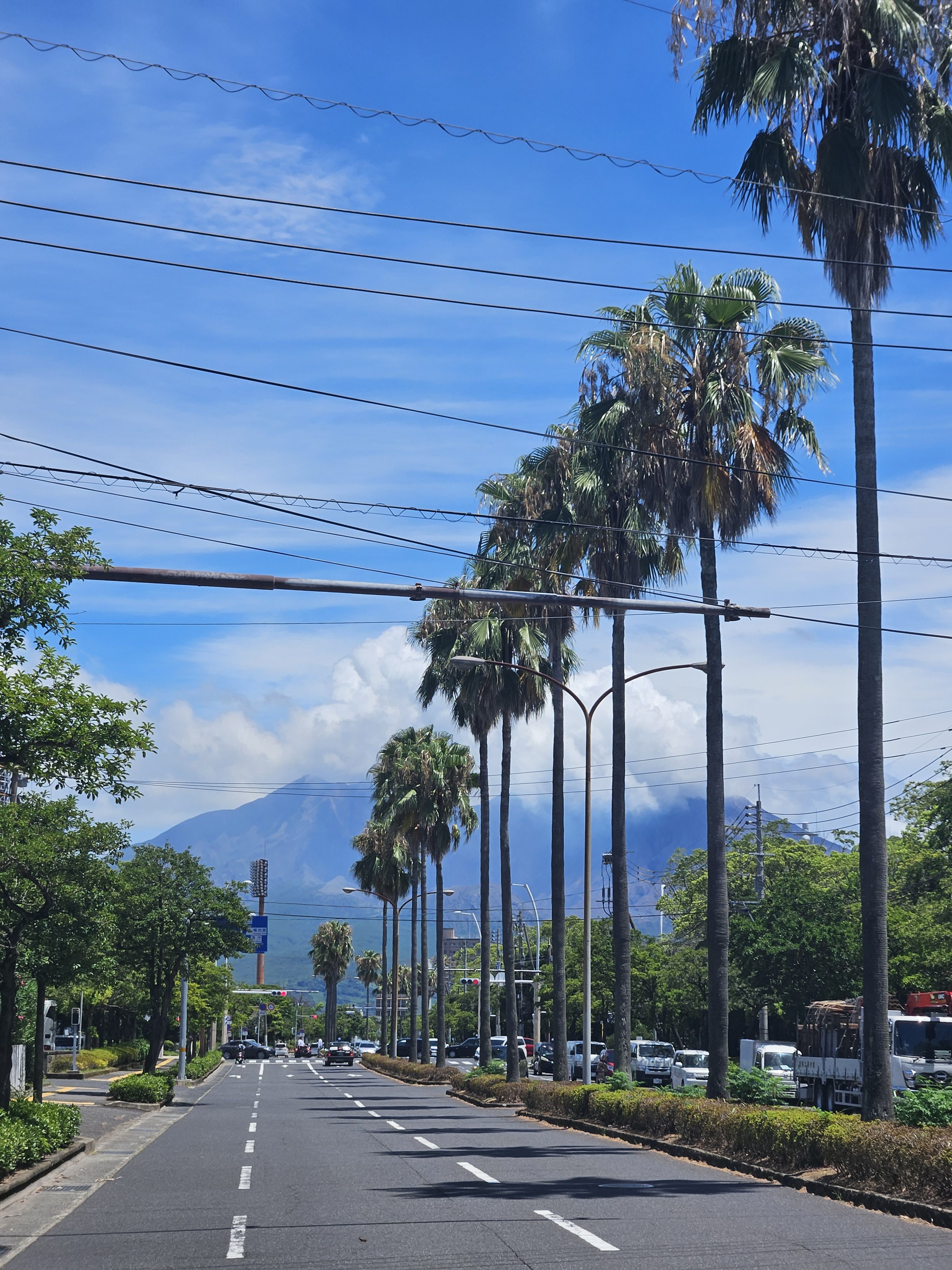
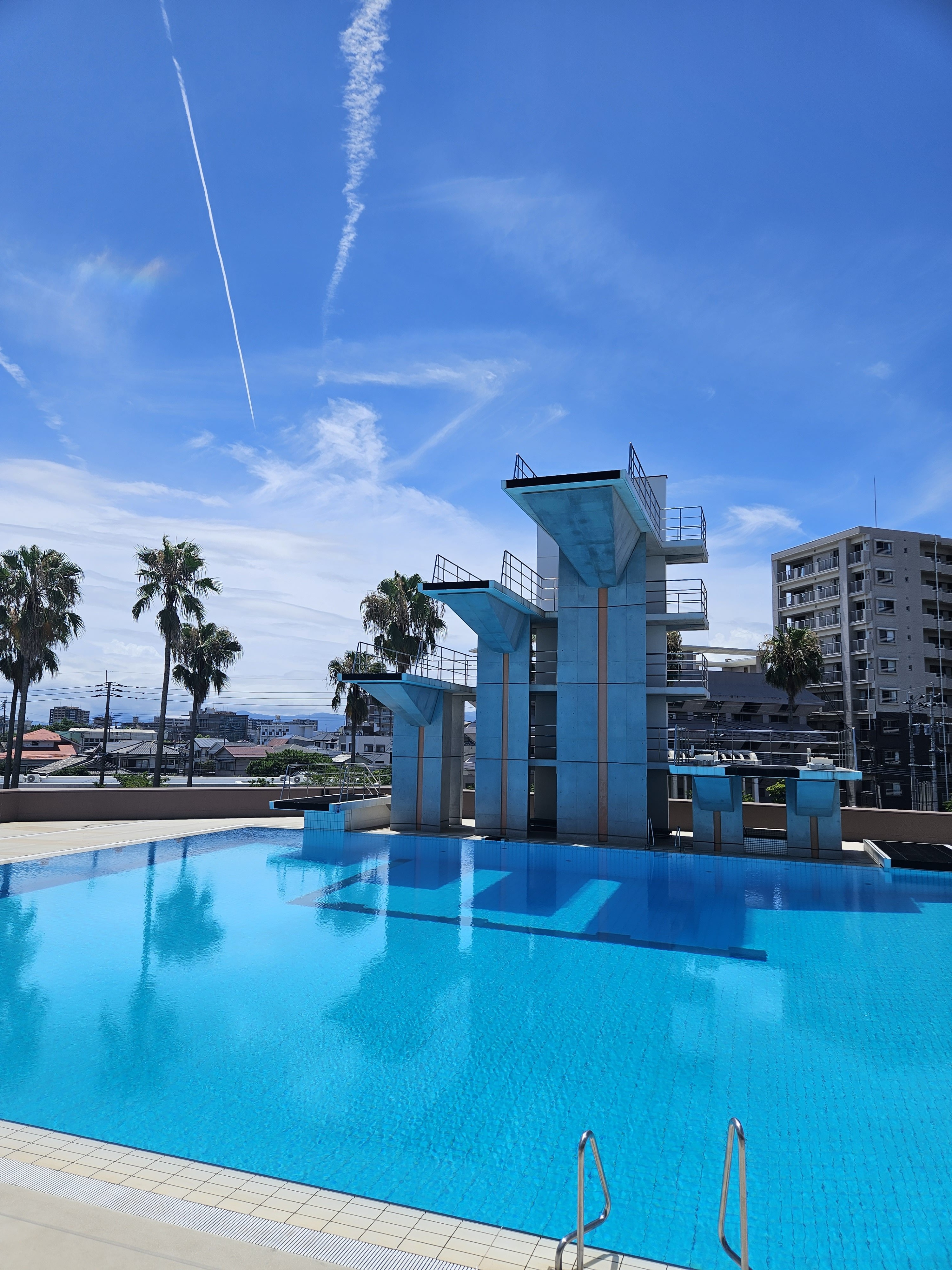
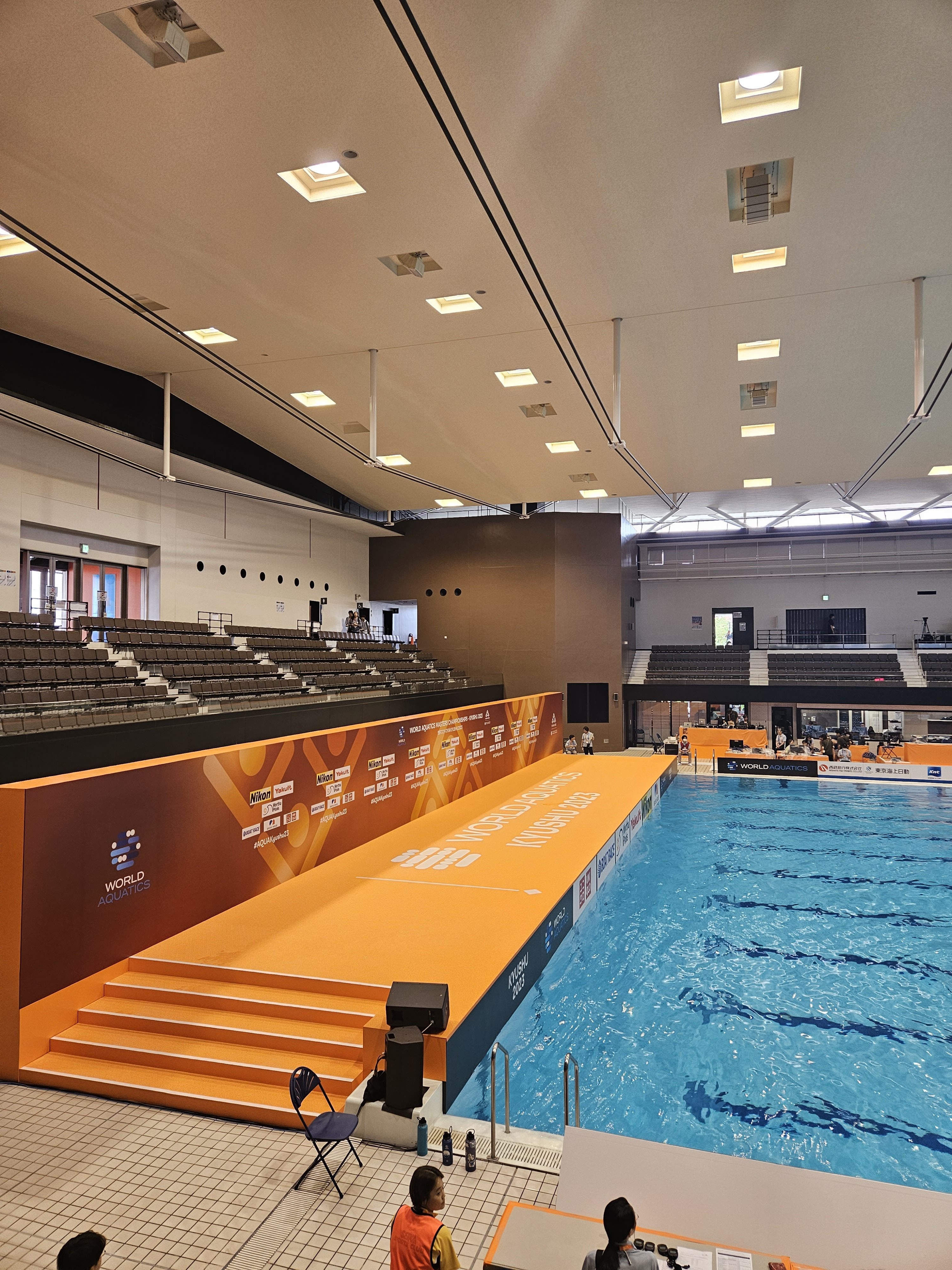
Our first event, the technical duet, required precision and mastery of mandatory elements. This routine requires performing specific elements that all teams must include, adding a layer of complexity and precision (Viana et al., 2019).Despite pre-event nerves, Mélody and I performed with confidence, securing 4th place, a result we celebrated.
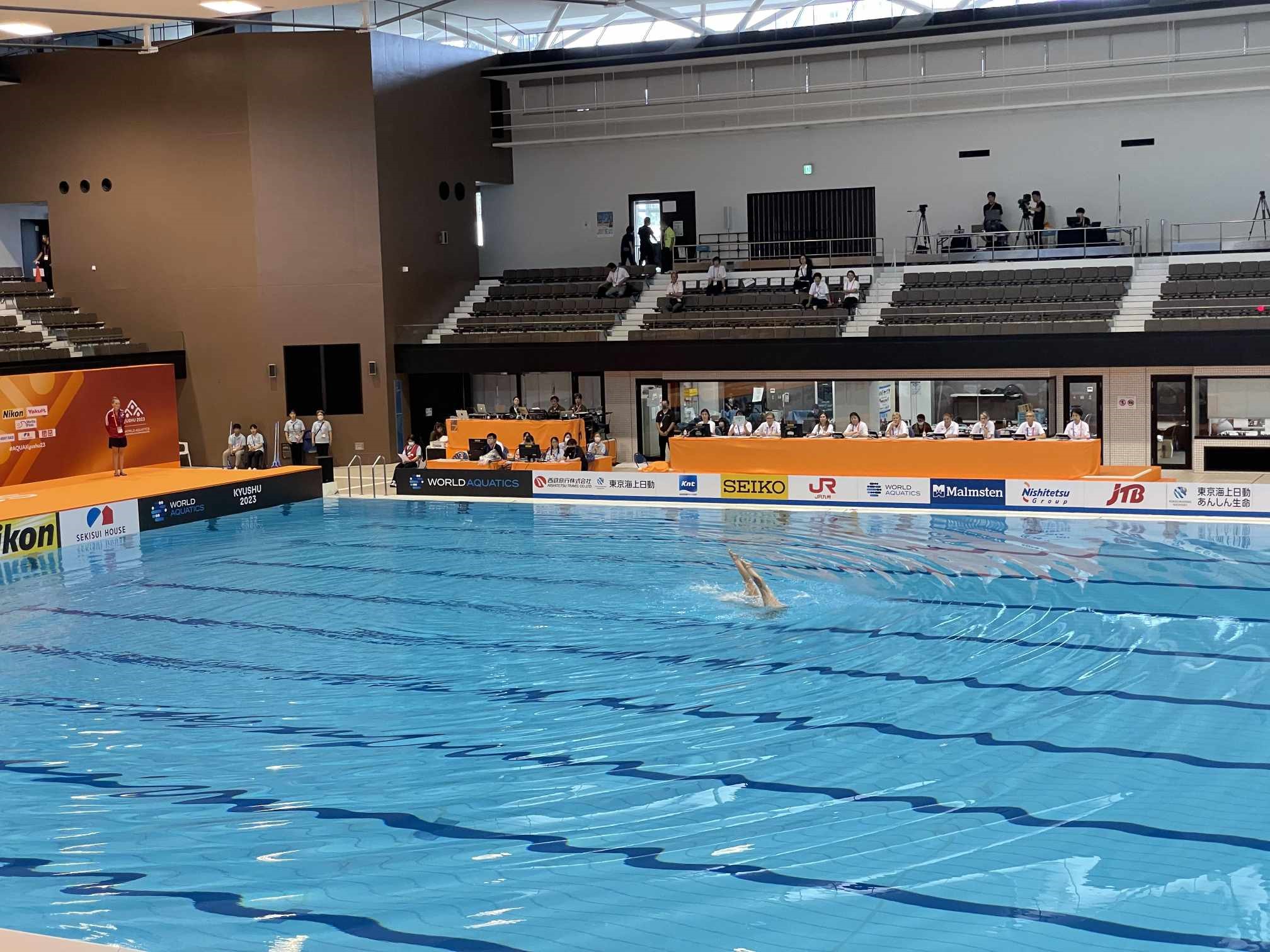
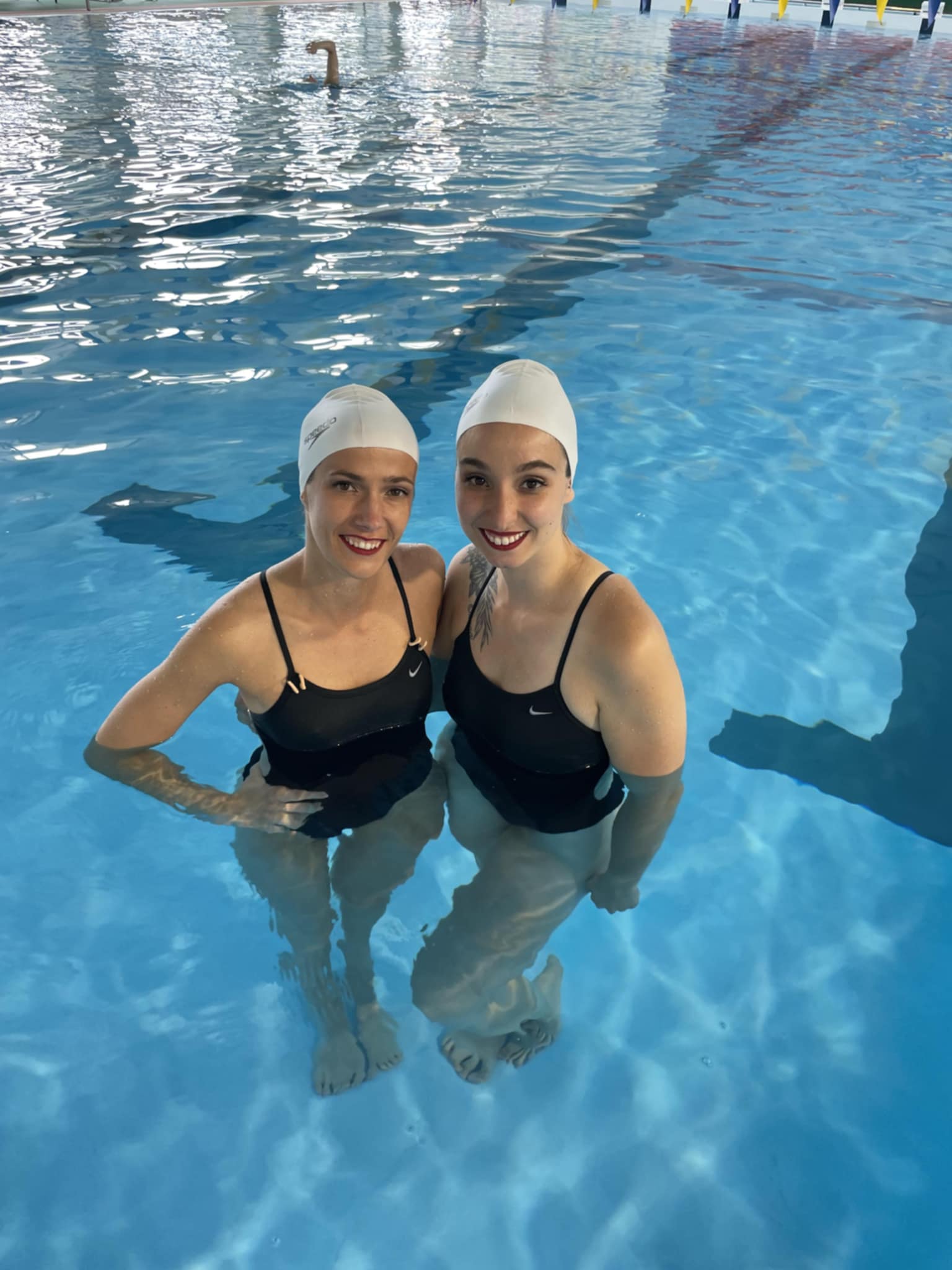
A typhoon briefly delayed the following days of the event, but we used this downtime to refine our free duet routine. Free routines do not require specific elements and allow for creative expression, showcasing an athlete’s unique strengths. For this event, because this routine is longer in duration, I anticipated dizziness during the performance, which is a recurring challenge for me. As a student in sport psychology, I found it incredibly useful to apply what I’ve learned to my own athletic career. In fact, I relied on visualization (i.e., mentally rehearsing our routine and envisioning myself performing it successfully) and self-talk (i.e., having a positive internal dialogue by reflecting on past experiences) to stay composed. These mental performance strategies, which I rarely practiced during my elite years, were game-changing as I was able to better manage my stress and stay focus on what I had to do.
Our combined scores earned us 4th place overall, behind 2 Japanese duets that were former national team members and our friends from the elite circuit. Competing in Japan was unforgettable, and I look forward to future opportunities.
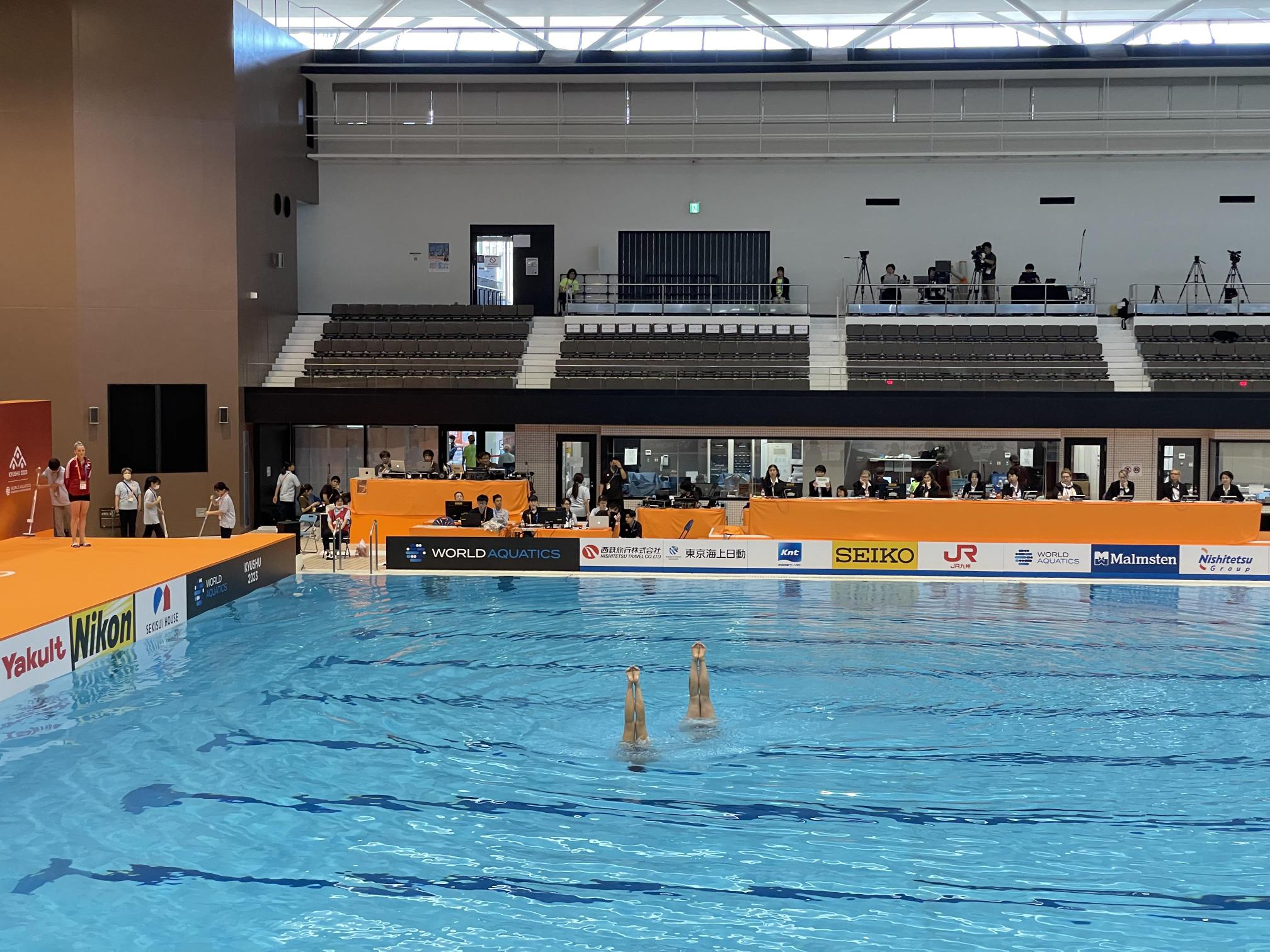
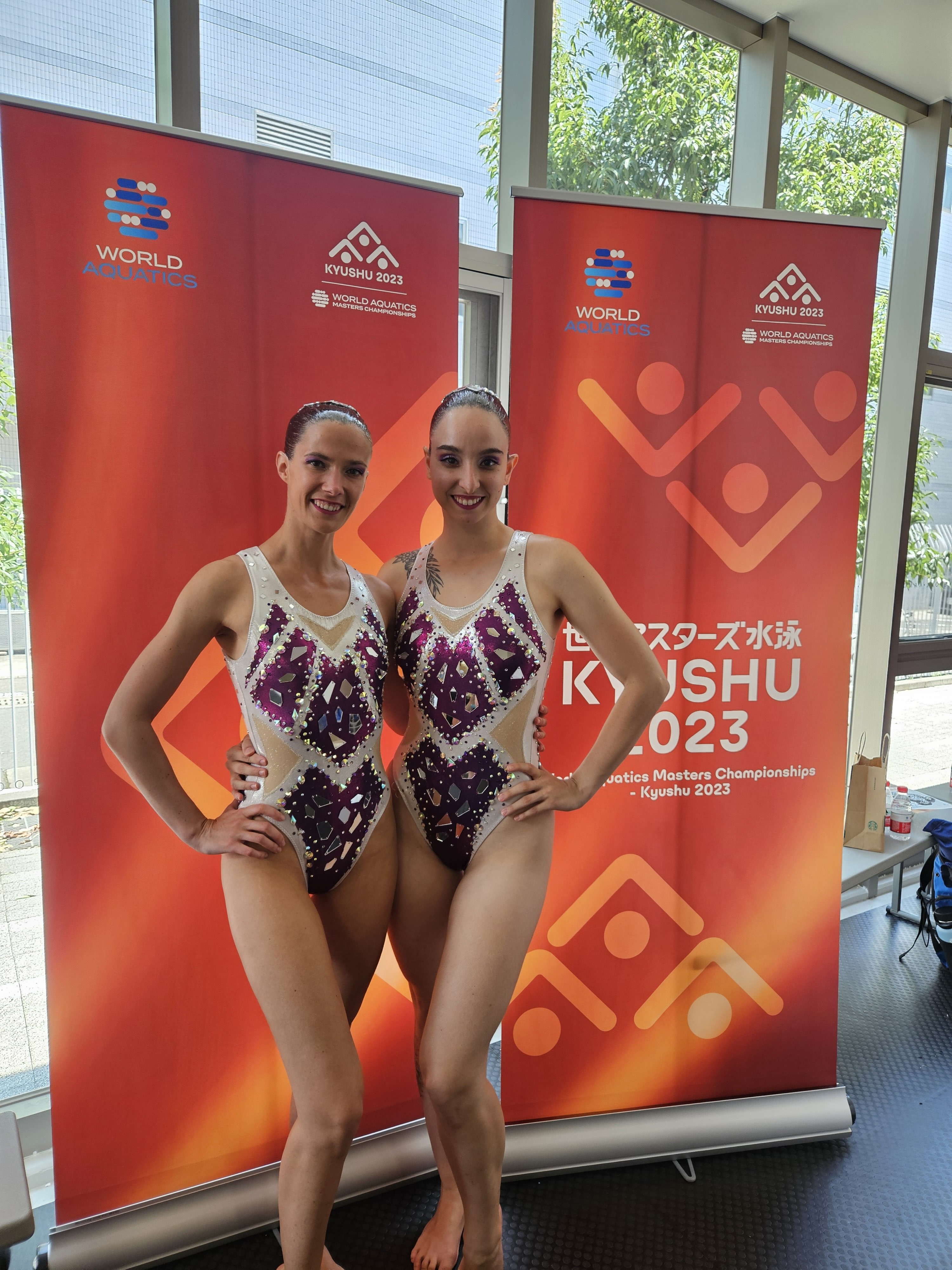
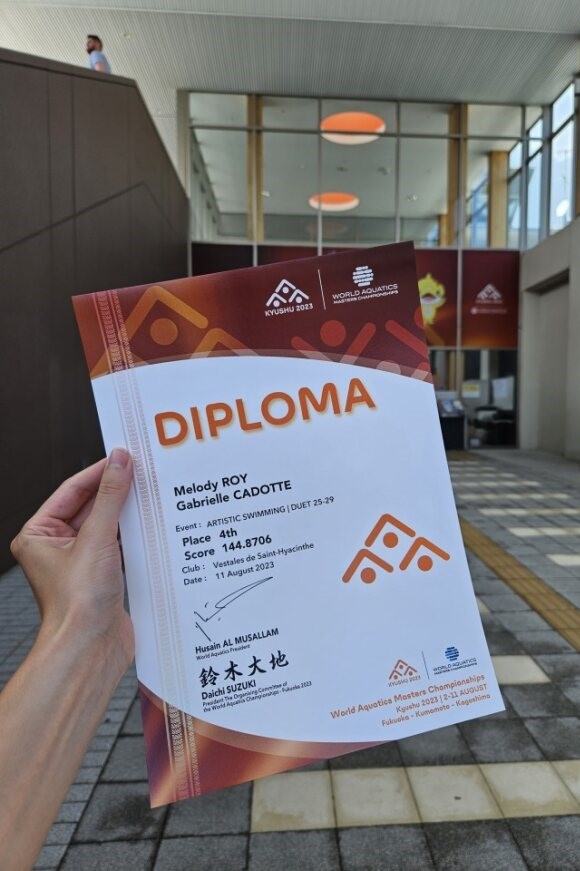
Key considerations and strategies for achieving success as a Masters athlete
I’ve gained invaluable lessons through sport, yet transitioning to the Masters level introduced a whole new perspective and required adaptations. Below are some key considerations for athletes entering or currently competing at the Masters level and the strategies I used to overcome challenges along the way.
- Managing time and motivation. Balancing training with personal and professional responsibilities demands strong time management skills and a high level of motivation. Unlike elite athletes, Masters athletes often juggle careers, family, and other commitments, making it crucial to integrate training into their regular routines. Personally, I prioritized consistency by scheduling my training sessions directly into my calendar, ensuring they became a non-negotiable part of my week. This approach helped me stay on track and maintain my focus amidst a busy lifestyle. My greatest motivator was my love for the sport. This sport has given me so much such as discipline, leadership, teamwork, and the ability to push beyond my limits. However, the feeling I experience while swimming is truly hard to put into words; it’s a moment where I can completely clear my mind of all other concerns. Additionally, as a PhD candidate in physical activity sciences, I have a deep understanding of the numerous benefits of staying physically active, particularly its positive impact on mental health, and I am committed to maintaining an active lifestyle.
- Finding your own resources. Unlike elite athletes who often have access to dedicated facilities and coaching staff, Masters athletes frequently face resource constraints, such as limited pool time and fewer coaching options. This reality requires sacrifices, adaptability, and creativity to find effective ways to train. Many Masters artistic swimmers, for example, train at unconventional hours, showcasing their commitment to the sport. Due to scheduling conflicts with several Masters artistic swimming clubs, we connected with a former coach who generously allowed us to use the pool for our duet practices during her club’s training sessions. This experience underscores the value of maintaining positive relationships. You never know when they might lead to meaningful opportunities! That said, because our pool time was limited, we made every moment count. During these sessions, we focused intensely on refining and perfecting our routines together. Then, to complement our pool training, I made sure to incorporate running and strength workouts. While these activities weren’t directly related to artistic swimming, they played a vital role in improving my cardiovascular fitness, strength, and flexibility, all of which significantly enhanced my overall performance.
- Covering the costs. Another challenge faced by Masters athletes is limited financial support, as they are typically ineligible for scholarships or funding opportunities compared to athletes from other levels. In fact, international competitions often come with significant expenses, including travel, accommodation, and registration fees. To offset these costs, I organized a GoFundMe. The overwhelming support from family and friends not only helped ease my financial burden, but also served as a powerful motivator. Knowing so many people believed in me and encouraged my journey to Japan was heartwarming and I will remain forever grateful for their generosity and encouragement!
- Demonstrating resilience. Resilience is crucial for Masters athletes, as it involves the ability to adapt and persevere through challenges, including the natural decline in physical abilities like cardiovascular capacity or flexibility. While realizing that these changes can be difficult to accept (believe me, I know!), Masters athletes must cultivate resilience to accept them and find new strategies for continued success. For me, building resilience meant celebrating my achievements throughout the year, even when they differed from past accomplishments. This approach allowed me to stay motivated and focused on progress, rather than comparing myself to previous performances. Embracing these changes with a positive mindset strengthened my ability to adapt and keep moving forward.
- Adapting training. Masters athletes typically train less frequently than in their elite years, making it essential to focus on quality over quantity. My approach to training has evolved significantly at the Masters level. I now prioritize listening to my body and setting realistic limits. While this is still difficult at times, I’ve learned to say “no” and stop when necessary. For instance, when I sustained an injury during the 2022-2023 season, I refrained from pushing through the pain as I would have done in my elite years. Instead, I communicated openly with Mélody and my coach, letting them know that I would only perform parts of the routine and movements that didn’t aggravate my injury. This shift in mindset reflects the principle of “train smarter, not harder,” enabling me to stay engaged in the sport while minimizing the risk of further injury. Ultimately, this approach allowed me to compete in every planned event, which was the primary goal!
These key considerations are important to consider before entering the Masters level. I hope the personal strategies I’ve shared to navigate the challenges faced by many Masters athletes will provide valuable insights for those looking to compete or are currently competing at this level.
Although age-related physical limitations, such as reduced flexibility, endurance, and recovery speed, are common, Masters athletes can adapt by training smarter. Moreover, with a deeper understanding of their bodies, they are better equipped to manage injuries and optimize recovery, allowing for continued success and longevity in the sport. After all, Masters master their sport in new and meaningful ways! The joy of competing and the opportunity for personal growth continue to inspire many Masters athletes, myself included, and I look forward to representing Canada at another international competition in the future!